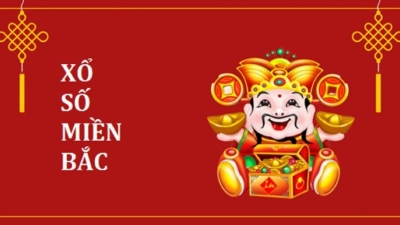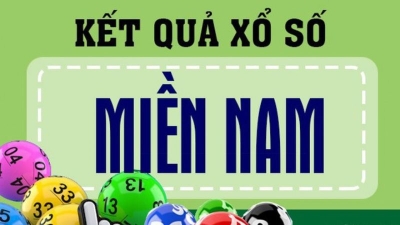Top 10 nhà cái tặng tiền đăng ký uy tín đẳng cấp Việt Nam 2025
Top 10 nhà cái tặng tiền uy tín nhất Việt Nam: Vsbet, 6686, debet, jun88, fi88, bsport, kubet, w88, m88, fun88, shbet, 789bet, dafabet... Thương hiệu cá cược trực tuyến, đăng ký nhận khuyến mãi 88k
Trong thế giới cá cược trực tuyến, việc lựa chọn nhà cái đáng tin cậy với những ưu đãi hấp dẫn là rất quan trọng. Danh sách top 10 nhà cái tặng tiền hàng đầu, nơi bạn có thể tìm thấy những chương trình khuyến mãi và phần thưởng lớn. Hãy cùng chúng tôi tìm hiểu về những nhà cái cá cược tặng tiền tốt nhất trên thị trường hiện nay.
Top 10+ nhà cái tặng tiền thưởng hấp dẫn cho người chơi cá cược
|
Nhà cái |
Ưu điểm đặc sắc của nhà cái tặng tiền |
|
1 |
VSBET - Nhà cái tặng tiền, trang web cá cược đẳng cấp quốc tế✅ Web cá độ bóng đá VSBET sở hữu một nền tảng công nghệ tiên tiến, giúp người chơi có trải nghiệm mượt mà và ổn định khi tham gia cá cược. ✅ Người chơi mới tại trang cá cược uy tín nhất VSBET có thể nhận được phần thưởng lên đến 150% cho lần gửi tiền đầu tiên, cùng với nhiều chương trình hoàn tiền khác. ✅ VSBET cung cấp dịch vụ phát trực tiếp các sự kiện thể thao, giúp người chơi theo dõi và đặt cược ngay trong thời gian thực. ✅ Nhà cái uy tín nhất hiện nay VSBET hỗ trợ nhiều ngôn ngữ, bao gồm tiếng Việt, giúp người chơi dễ dàng tương tác và sử dụng dịch vụ. |
|
2 |
6686 - Nhà cái tặng tiền thưởng siêu hấp dẫn cho hội viên✅ Nhà cái cá độ bóng đá 6686 thường xuyên có các chương trình khuyến mãi như thưởng 200% cho lần gửi tiền đầu tiên, giúp người chơi có thêm vốn để bắt đầu trải nghiệm. ✅ Thiết kế giao diện của nhà cái uy tín nhất 6686 rất trực quan và dễ sử dụng, cho phép anh em game thủ dễ dàng tìm kiếm và tham gia vào các trò chơi online mà họ yêu thích. ✅ Tại nhà cái uy tín nhất Việt Nam 6686, người chơi có thể tham gia vào nhiều loại hình cá cược như thể thao, casino trực tuyến và các trò chơi slot với nhiều chủ đề khác nhau. ✅ Trang cá độ bóng đá uy tín nhất Việt Nam 6686 sử dụng công nghệ mã hóa hiện đại để đảm bảo rằng thông tin & dữ liệu cá nhân của người chơi luôn được bảo vệ an toàn. |
|
3 |
Sky88 - Nhà cái uy tín hàng đầu trong lĩnh vực cá cược tại Việt Nam✅ Nhà cái online Sky88 được cấp phép hoạt động hợp pháp, mang lại cho người chơi sự yên tâm khi tham gia cá cược. ✅ Nhà cái này thường xuyên tung ra các khuyến mãi hấp dẫn như 100% thưởng cho lần gửi đầu tiên và hoàn tiền 20% cho các cược thua. ✅ Nhà cái tặng tiền Sky88 cung cấp nhiều loại hình cá cược khác nhau, từ thể thao, casino online đến game slot, đáp ứng nhu cầu đa dạng của người chơi. ✅ Đội ngũ hỗ trợ khách hàng của trang cá độ bóng đá uy tín Sky88 luôn sẵn sàng 24/24 để giải đáp mọi thắc mắc & hỗ trợ hội viên kịp thời. |
|
4 |
789bet - Nhà cái tặng tiền với trải nghiệm cá cược độc đáo✅ Nhà cái uy tín 789bet cung cấp một nền tảng trực tuyến mượt mà và dễ sử dụng, mang đến trải nghiệm tuyệt vời cho người chơi. ✅ Người chơi mới có thể nhận thưởng lên đến 100% cho lần gửi tiền đầu tiên, cùng với nhiều chương trình khuyến mãi khác. ✅ Tại nhà cái bóng đá uy tín 789bet, người chơi có thể tìm thấy nhiều loại hình cá cược từ thể thao, casino truc tuyen đến xổ số với nhiều lựa chọn hấp dẫn. ✅ Nhà cái này cam kết bảo vệ thông tin cá nhân và tài khoản của người chơi bằng các công nghệ bảo mật tiên tiến. |
|
5 |
12bet - Nhà cái uy tín mang đến nhiều cơ hội cá cược✅ Sòng bạc trực tuyến 12bet sở hữu giao diện trực quan, giúp người chơi dễ dàng tìm kiếm các trò chơi và dịch vụ mà họ yêu thích. ✅ Trang ca do bong da này thường xuyên đưa ra các chương trình khuyến mãi như thưởng 150% cho lần gửi tiền đầu tiên và hoàn tiền cho cược thua lên tới 30%. ✅ Tại nhà cái tặng tiền 12bet, người chơi có thể tham gia vào nhiều loại hình cá cược từ thể thao, game casino online đến các trò chơi khác với hàng trăm lựa chọn. ✅ Trang cá độ bóng đá online 12bet cung cấp dịch vụ chăm sóc khách hàng chuyên nghiệp, luôn sẵn sàng hỗ trợ người chơi bất kỳ lúc nào. |
|
6 |
SHBET - Nhà cái tặng tiền siêu hấp dẫn cho người chơi✅ Người chơi mới tại SHBET có thể nhận ngay khoản thưởng lên tới 150% cho lần gửi tiền đầu tiên và nhà cái khuyên mäi thành viên mới 50k, giúp gia tăng số vốn cược ngay từ đầu. ✅ Trang casino trực tuyến SHBET cung cấp một loạt các trò chơi từ thể thao, casino trực tuyến đến game slot, sân chơi đáng tin cậy này đáp ứng nhu cầu giải trí phong phú của người chơi. ✅ Giao diện của nhà cái khuyến mãi SHBET được thiết kế thân thiện, dễ dàng truy cập và sử dụng, ngay cả với những người chơi mới. ✅ Đội ngũ hỗ trợ khách hàng của nhà cái tặng tiền miễn phí SHBET luôn sẵn sàng giúp đỡ người chơi mọi lúc, mọi nơi thông qua nhiều kênh như chat trực tuyến, điện thoại và email. ✅ Trang cá độ bóng đá SHBET cam kết sử dụng công nghệ mã hóa hiện đại để bảo vệ thông tin & dữ liệu cá nhân của người chơi, mang đến sự an tâm tuyệt đối. |
|
7 |
Onbet - Nhà cái tặng tiền, trang web cá cược online toàn diện✅ Người chơi mới sẽ nhận ngay khoản thưởng 200% cho lần gửi đầu tiên, giúp gia tăng cơ hội chiến thắng ngay từ những bước đầu tiên. ✅ Nhà cái tặng tiền trải nghiệm Onbet không chỉ cung cấp cá cược thể thao mà còn nhiều trò chơi casino, poker và xổ số, phục vụ cho nhiều sở thích của người chơi. ✅ App cá độ bóng đá Onbet hỗ trợ nhiều hình thức thanh toán khác nhau, từ chuyển khoản ngân hàng đến ví điện tử, giúp người chơi thực hiện giao dịch thuận tiện và nhanh chóng. ✅ Người chơi thường xuyên sẽ được tham gia chương trình VIP với nhiều ưu đãi độc quyền, bao gồm hoàn tiền lên đến 15% cho cá cược thua. ✅ Web cá độ bóng đá uy tín Onbet hỗ trợ nhiều ngôn ngữ khác nhau, bao gồm cả tiếng Việt, giúp người chơi từ khắp nơi có thể dễ dàng tham gia cá cược. |
|
8 |
EE88 - Nhà cái cá độ bóng đá uy tín và chất lượng✅ Người chơi mới sẽ được nhận thưởng 100% cho lần gửi đầu tiên, tối đa lên đến 3 triệu VNĐ, giúp khởi đầu hành trình cá cược dễ dàng hơn. ✅ Trang cá độ bóng đá trực tuyến uy tín EE88 sử dụng công nghệ mã hóa SSL hiện đại, đảm bảo an toàn cho tất cả thông tin và giao dịch của người chơi. ✅ Đội ngũ chăm sóc khách hàng của trang cá độ bóng đá uy tín EE88 luôn sẵn sàng hỗ trợ 24/7, giải đáp mọi thắc mắc và khiếu nại của người chơi một cách nhanh chóng. ✅ Nhà cái tặng tiền EE88 hỗ trợ nhiều phương thức thanh toán khác nhau, từ thẻ tín dụng đến ví điện tử, giúp người chơi dễ dàng nạp và rút tiền. |
|
9 |
SV88 - Nhà cái mới uy tín với dịch vụ chuyên nghiệp✅ Nhà cái tặng cược miễn phí SV88 cung cấp cho người chơi mới một khoản thưởng 150% cho lần gửi tiền đầu tiên, tối đa lên đến 5 triệu VNĐ, giúp người chơi dễ dàng bắt đầu. ✅ Với nền tảng công nghệ tiên tiến, trang cá độ bóng đá trực tuyến SV88 mang đến trải nghiệm cá cược mượt mà, không lag hay giật lag. ✅ Tại SV88, người chơi có thể tìm thấy nhiều loại hình cá cược khác nhau từ thể thao, casino đến các game tặng 100k trải nghiệm. ✅ Đội ngũ hỗ trợ khách hàng của trang cá độ bóng đá trực tuyến SV88 luôn có mặt để giúp đỡ người chơi, từ việc giải đáp thắc mắc đến xử lý khiếu nại một cách nhanh chóng.. |
|
10 |
Mu88 - Nhà cái tặng tiền với nhiều event ưu đãi khuyến mãi 100%✅ Người chơi mới sẽ nhận ngay 100% thưởng cho lần gửi đầu tiên và nhà cái khuyến mãi thành viên mới 50k, giúp tăng cường số vốn cược một cách hiệu quả. ✅ Trang cá cược bóng đá Mu88 có giao diện thân thiện và dễ dàng điều hướng, giúp người chơi dễ dàng tìm kiếm và tham gia vào các trò chơi mà họ yêu thích. ✅ Mu88 mang đến nhiều loại hình cá cược từ thể thao, casino đến game tặng tiền miễn phí, phục vụ cho mọi sở thích của người chơi. ✅ Trang cá cược bóng đá uy tín Mu88 sử dụng công nghệ mã hóa hiện đại để bảo vệ thông tin và tài khoản của người chơi, đảm bảo an toàn tuyệt đối. |
Kết luận
Việc lựa chọn một nhà cái tặng tiền đáng tin cậy là điều vô cùng quan trọng để đảm bảo một trải nghiệm cá cược online an toàn & thú vị. Top 10 nhà cái mà chúng tôi đã giới thiệu không chỉ mang đến những ưu đãi hấp dẫn cho người chơi mà còn cam kết bảo mật thông tin và chất lượng dịch vụ.









